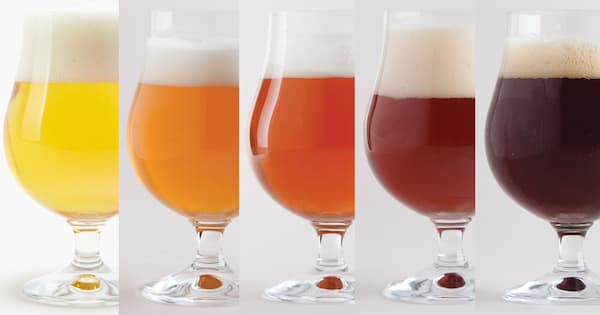What is SRM in craft beer? Brewing beer is an art and a science, and the SRM scale is just one tool brewers can use to create their perfect brew. By understanding what SRM is and how to adjust your beer’s color using SRM measurements, you’ll be able to create the perfect beer every time.

Brewers have been using SRM to measure and adjust the color of their beer for centuries. But what is SRM, exactly? And what does it mean for craft brewers? In this article, we’ll discuss what SRM is and how it affects the color of your beer. We’ll also explore some tips for adjusting your beer’s color using SRM measurements. So what are you waiting for? Start reading!
What Is SRM In Craft Beer?
SRM stands for “standard reference method.” It’s a way of measuring the color of beer, and it’s been around since the 19th century. The SRM scale runs from 0 to 40, with 0 being completely colorless and 40 being black. The vast majority of beers fall somewhere in between these two extremes. Brewers use SRM to adjust the color of their beer. A lower SRM number means a lighter-colored beer, while a higher SRM number means a darker-colored beer.

There are several factors that affect a beer’s color, including malt type, grain bill, and brewing process. The SRM scale can help brewers control and predict the color of their beer, you can drink beer on the best scotch whiskey glasses. For example, if a brewer wants to make a pale ale, they would use malt with a low SRM. If they wanted to make a stout, they would use malt with a high SRM.
Adjusting Your Beer’s Color With SRM
There are several ways to adjust the color of your beer using SRM measurements. Here are a few tips:
Use Malts With Different Colors
Use malts with different SRM ratings to create different colors. For example, if you want to make a light-colored beer, use pale malt. If you want to make a dark-colored beer, use chocolate malt.
Change The Amount Of Malt You Use
You can also adjust the color of your beer by changing the amount of malt you use. For example, using more pale malt will make your beer lighter in color, while using more chocolate malt will make it darker.
Choose The Right Hops
Hops also play a role in the color of your beer. Some hops are more intense than others and can add a darker hue to your brew.
Brew Your Beer In A Darker Or Lighter Vessel
The type of vessel you brew your beer in can also affect its color. Brewing in a dark vessel will make your beer darker while brewing in a light vessel will make it lighter.
Is SRM Important In Craft Beer?
The short answer is yes, SRM is important in craft beer. The color of your beer can affect its flavor and aroma, so it’s important to get it right.
What Are SRM Colors?
Here’s a handy chart that shows the SRM colors of some common beer styles:
- Beer Style SRM
- Pale Ale 0-12
- IPA 12-22
- Wheat Beer 13-20
- Dunkelweizen 20-30
- Belgian Witbier 15-25
- German Hefeweizen 17-25
- Stout 30+
- Porter 17-30
What Are The Factors Affecting Beer Color?
If you are looking what are the factors that affect the beer color. Then there are several factors that affect the color of beer, including:
- Malt type
- Grain bill
- Brewing process
- Yeast strain
- Hops variety and intensity
Conclusion
I hope this article has helped you understand what is SRM in craft beer and how to use it to adjust the color of your beer. Brewing beer is a fun and rewarding hobby, and with a little practice, you’ll be able to create the perfect brew every time. If you have any questions on what is SRM in craft beer, feel free to text us in the comment section. Stay tuned to chillbeer for more updates.